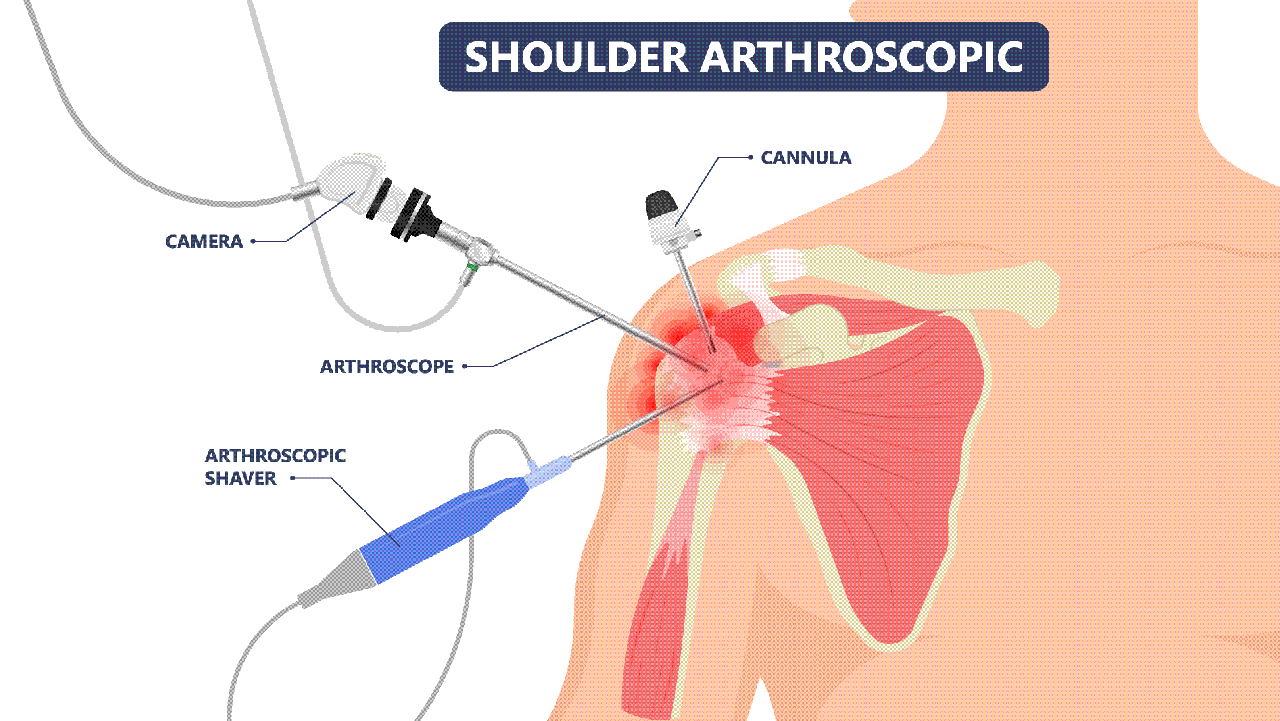Shoulder arthroscopy is a minimally invasive surgical procedure that has become a cornerstone in the treatment of various shoulder conditions. Whether you’re suffering from a rotator cuff tear, labral injury, or shoulder impingement syndrome, shoulder arthroscopy offers a targeted and effective solution for addressing these issues. Here’s what you need to know about this advanced procedure:

Understanding Shoulder Arthroscopy
Shoulder arthroscopy involves the use of a small camera, called an arthroscope, to visualize and treat problems within the shoulder joint. This camera is inserted through small incisions, allowing orthopedic surgeons to examine the internal structures of the shoulder, including the rotator cuff, labrum, and surrounding ligaments, with great precision.
Indications for Shoulder Arthroscopy
Rotator Cuff Tears
One of the most common reasons for shoulder arthroscopy is to repair rotator cuff tears. These tears can occur due to overuse, trauma, or degenerative changes in the shoulder joint. Arthroscopic surgery enables surgeons to access the torn tendon and repair it using specialized instruments, promoting healing and restoring function to the shoulder.
Labral Tears
Labral tears, which affect the cartilage rim surrounding the shoulder socket, can also be addressed through arthroscopic surgery. Surgeons can repair or remove the damaged labrum, alleviating pain and instability in the shoulder joint.
Shoulder Impingement Syndrome
Shoulder impingement syndrome occurs when the tendons of the rotator cuff become pinched between the bones of the shoulder. Arthroscopic surgery can be used to remove inflamed tissue and create more space within the shoulder joint, relieving symptoms and improving range of motion.
Benefits of Shoulder Arthroscopy
Minimally Invasive
One of the primary advantages of shoulder arthroscopy is that it is minimally invasive. Compared to traditional open surgery, arthroscopic procedures involve smaller incisions, resulting in less post-operative pain, scarring, and faster recovery times for patients.
Accurate Diagnosis
Shoulder arthroscopy allows for a more accurate diagnosis of shoulder conditions. By directly visualizing the internal structures of the shoulder joint, surgeons can identify the precise location and extent of any damage, guiding the treatment process effectively.
Faster Recovery
Due to its minimally invasive nature, shoulder arthroscopy typically leads to faster recovery times for patients. Most individuals can return to their normal activities within a few weeks following surgery, with rehabilitation focused on restoring strength and mobility to the shoulder.
Conclusion
MJ Surgical is a highly effective surgical technique for diagnosing and treating a variety of shoulder conditions. Whether you’re dealing with a rotator cuff tear, labral injury, or shoulder impingement syndrome, arthroscopic surgery offers a minimally invasive approach with excellent outcomes. If you’re considering shoulder arthroscopy, consult with a qualified orthopedic surgeon to discuss your options and determine the best course of treatment for your individual needs.

